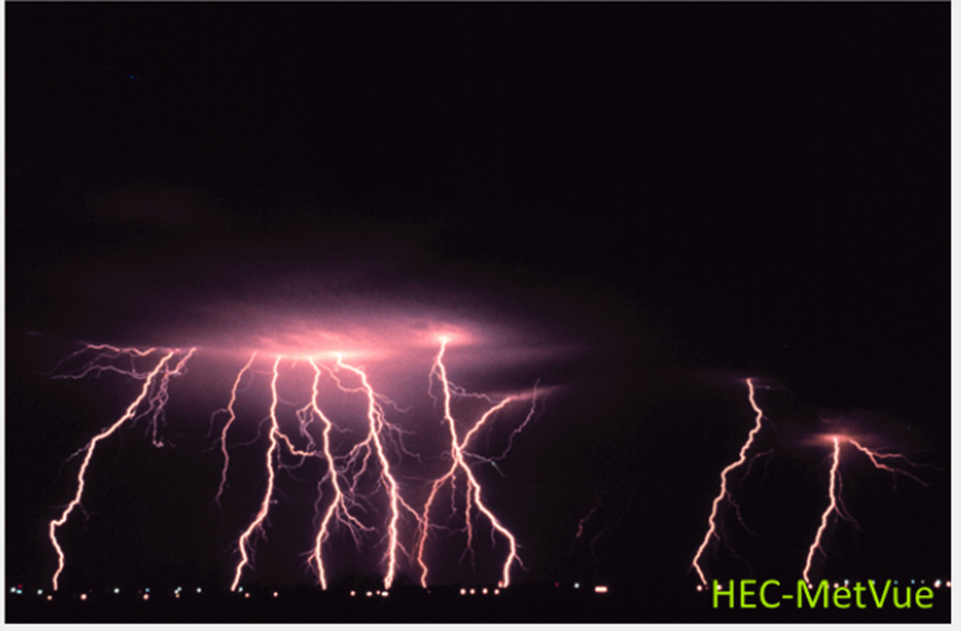By Fauwaz Hanbali

The Hydrologic Engineering Center's Meteorological Visualization Utility Engine (HEC-MetVue) software is loosely based on a program named ViewRain that was developed in the early 1990s by the Tulsa District office of the U.S. Army Corps of Engineers. The original ViewRain program was written specifically for the Windows platform using the C language. ViewRain was developed to display rainfall information from automated rain gages and National Weather Service Observers. ViewRain was later modified to support NEXRAD radar grids. Later versions supported some limited datasets other than precipitation. All data was kept in binary files designed specifically for use with ViewRain. The Tulsa District provided additional programs to help users import data in flat files with the necessary format; however, no coordinate transformations were provided or supported. ViewRain only supported data with longitude/latitude coordinates.
The current version of builds upon many of the capabilities that the original ViewRain program provided such as Delaunay Triangulation of irregular, non-gridded datasets as well as many other geometric algorithms ViewRain supplied. All source code for the HEC-MetVue is now written in Java to enhance the portability aspects of the program. HEC-MetVue is built using the Netbeans Platform to provide a common use windowing environment that provides support for menus and window placement. HEC-MetVue supports the original ViewRain file formats used to contain the datasets that were developed by the Tulsa District. HEC-MetVue also supports HEC-DSS for spatial image storage and retrieval, and the I/O provider model provides the necessary facilities for the addition of other file formats such as XMRG, NetCDF, and GRIB. The original file format used to hold mapping files was abandoned in favor of using industry standard shapefiles along with interfaces built to accommodate other standards in the future.
This program is designed to display, verify, manipulate and edit spatial data by interactive/visual means. Any dataset consisting of points in space with coordinates and measurement values ([X, Y, Mn]) can be used in the program. Most often, HEC-MetVue is used to manipulate precipitation data but is not limited to precipitation. It has the capability to display the data in a variety of ways such as by contouring it or showing measurement values. HEC-MetVue can perform spatial computations, such as basin averages using a combination of the dataset along with georeferenced polygon data. The program supports many data storage and projection formats and also provides an Input/Output (I/O) provider specification to allow additional formats to be incorporated to meet a variety of needs without requiring external data conversion.
For more information please see the following link: https://www.hec.usace.army.mil/software/hec-metvue/ The author of this article and point of contact for HEC-MetVue is Fauwaz Hanbali of HEC.